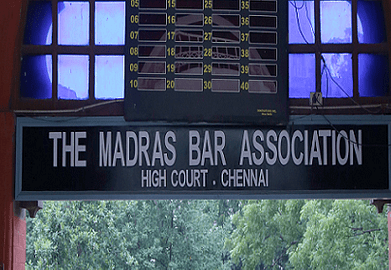
The rules formulated in February 2020 known as the Tribunal, Appellate Tribunal and other Authorities (Qualifications, Experience and other Conditions of Service of Members) Rules, 2020 (The Tribunal Rules 2020) have been challenged by the Madras Bar Association vide a writ petition in the Supreme Court. The preceding rules which were formulated under Finance Act 2017 had also run into trouble and the apex court had set them aside in its decision in Rojer Mathew vs South Indian Bank Ltd. The five-judge constitution bench had held that the Tribunal rules, 2017 were held to be ultra of the constitution for contravening principles of separation of powers, dilution of the independency of the judiciary, both of which form the basic structure of the Constitution and for being against previous decisions of the apex court.
Basic Structure is a doctrine propounded through the Kesavananda Bharti judgment which states that the Parliament cannot make laws and cannot make any amendments to the Constitution which abrogate the “basic structure” of the Constitution which includes principles of separation of powers and independence of the judiciary, secular character, supremacy of Constitution and so on.
To ensure that the independence of the judiciary is maintained, the court has in its previous judgement laid out several principles for the constitution of Tribunals. In Union of India v. R. Gandhi (decided on May 11, 2010) the court has laid out certain principles:
Majority of selection committee members should be from the judiciary and the chief Justice of India must have a casting vote
Chairpersons and Presiding Officers of Tribunals must be judicial officers
Persons who are not judges or practicing advocates must not be appointed as judicial members
Only those bureaucrats who have adjudicatory experience must be appointed as technical members
The tenure of the members should be at least 5 to 7 years
The administrative control of the Tribunal should not be with the parent department. All Tribunals should be under a single nodal agency such as the Ministry of Law and Justice.
Two-member benches should always have a judicial officer. In case of larger benches, majority members should be judicial members
The Selection Committee should comprise of Chief Justice of India (or his nominee) as Chairperson and other members: Chief Justice of a High Court or a senior judge of the Supreme Court and Secretaries of Ministry of Finance and Ministry of Law
The petitioner, Madras Bar Association, argues that the Tribunal Rules 2020 do not follow these guidelines such as judicial dominance in the selection Committee, there is no casting vote for the Chief Justice of India and there is provision for letting persons without judicial or legal expertise to become Presiding Officers of some Tribunals.
The petition states that The Executive has administrative and financial control and has control over the appointment process, with the parent department being included in the appointment process which is a clear conflict of interest. Further, practising advocates have been left out of the ambit for consideration for appointment to Debts Recovery tribunal and Administrative Tribunals and so on.
The petition concludes that the Tribunal Rules 2020 should be struck down for being violative of Articles 14 (right to equality of law) and 21 (right to life) for being arbitrary and unreasonable against principles of Separation of powers and independence of judiciary, and in contravention of previous decisions of the Supreme Court.
Related:
SC issues notice to NHRC, Centre; asks if state Commissions are functioning
Fundamental right of reporter to publish news even if not palatable to administration: Calcutta HC
An ‘Emergency’ Constitutional Crisis